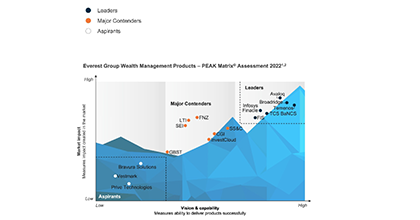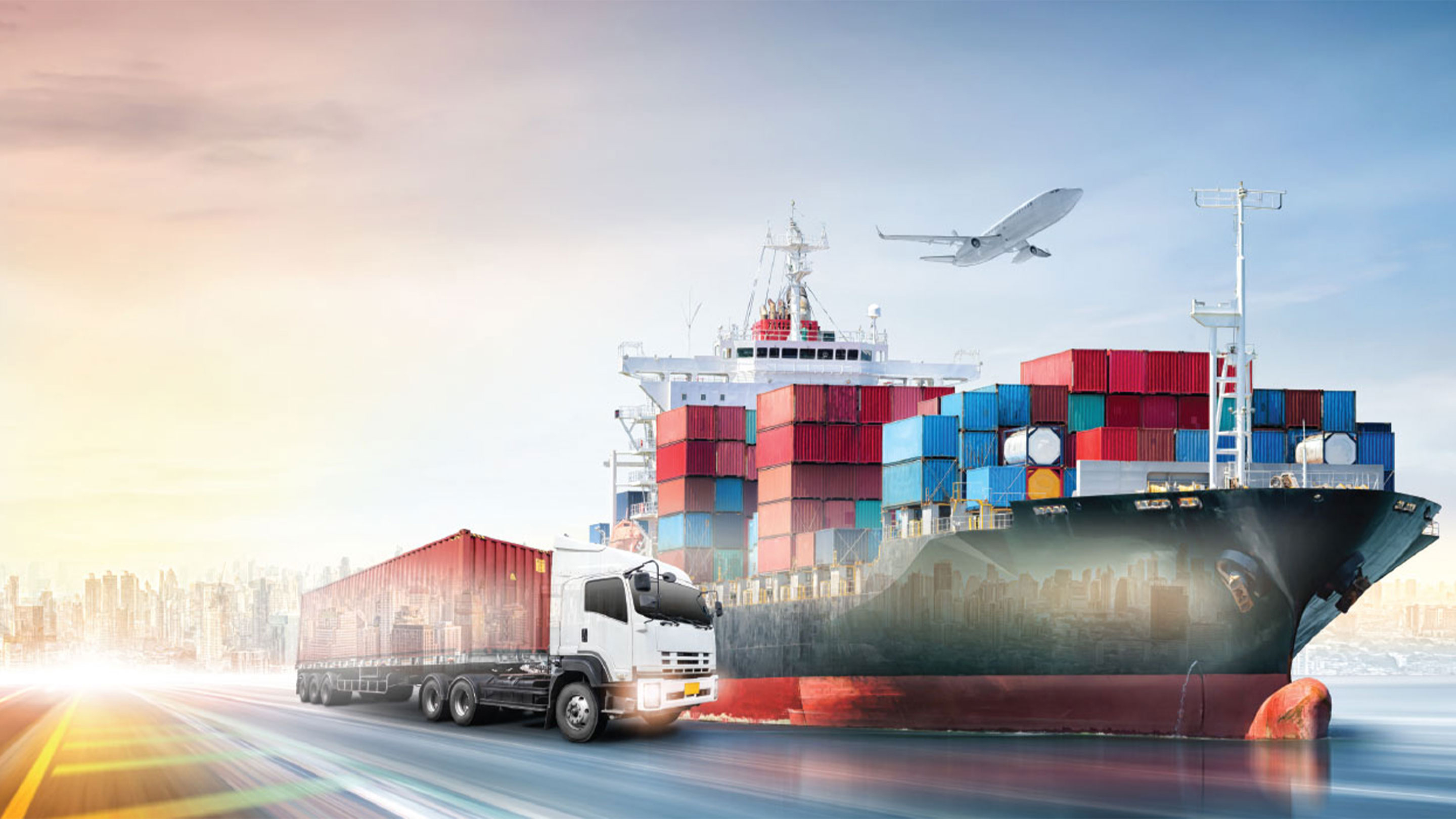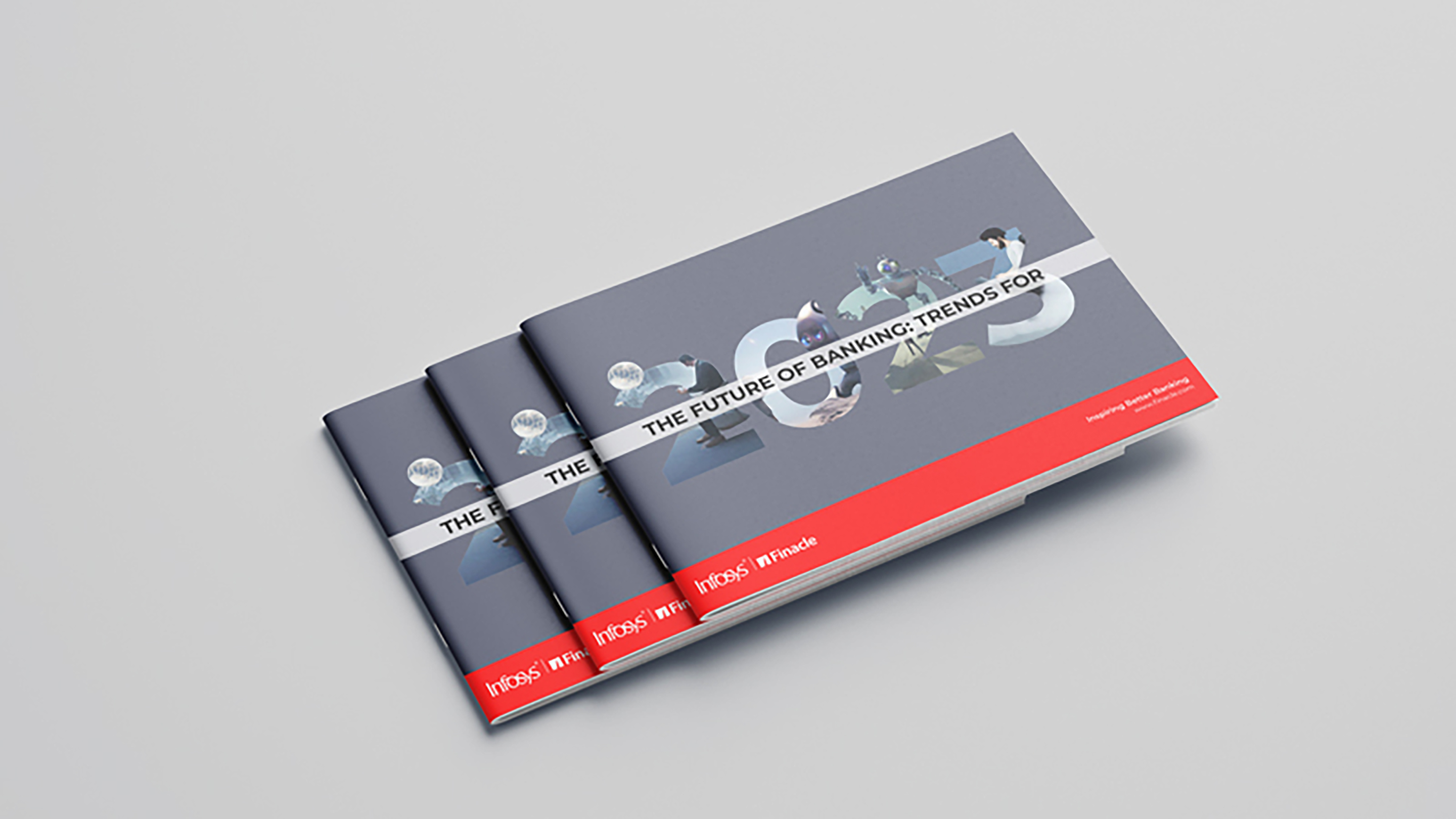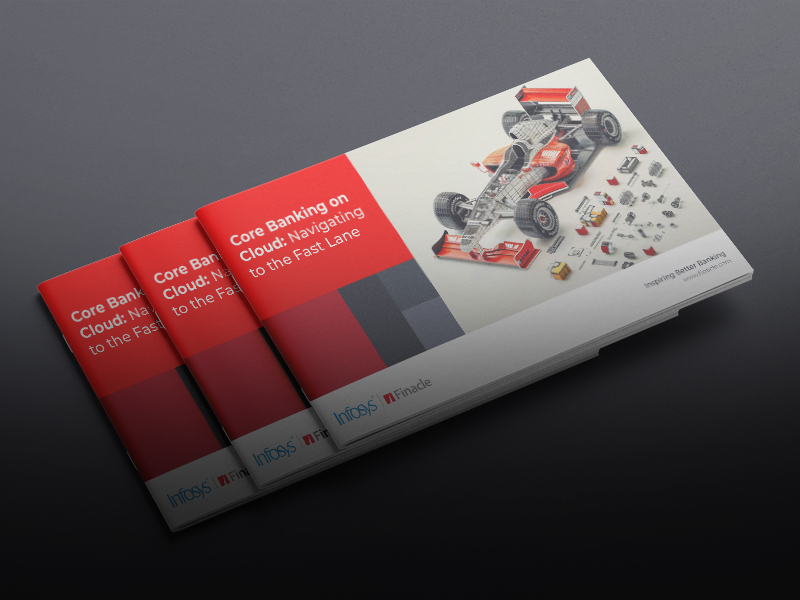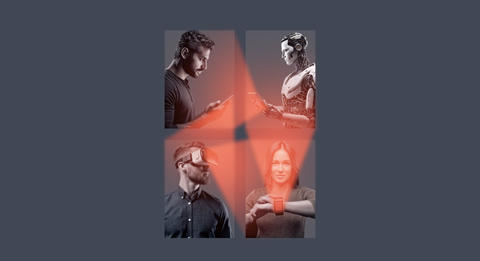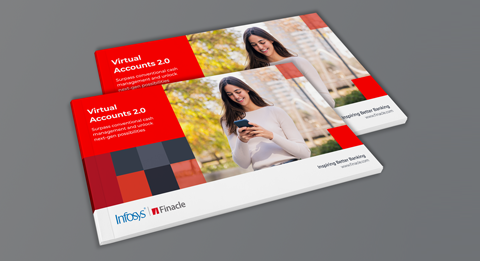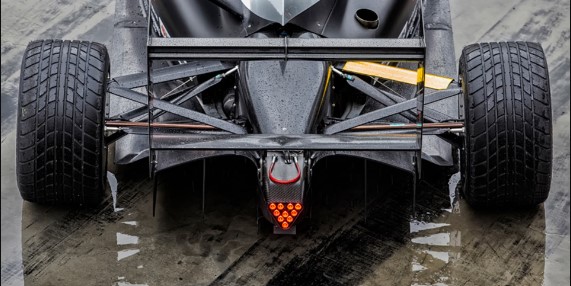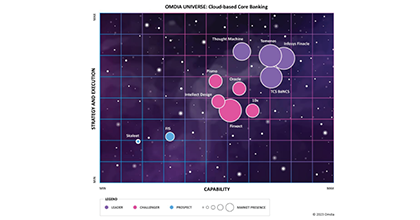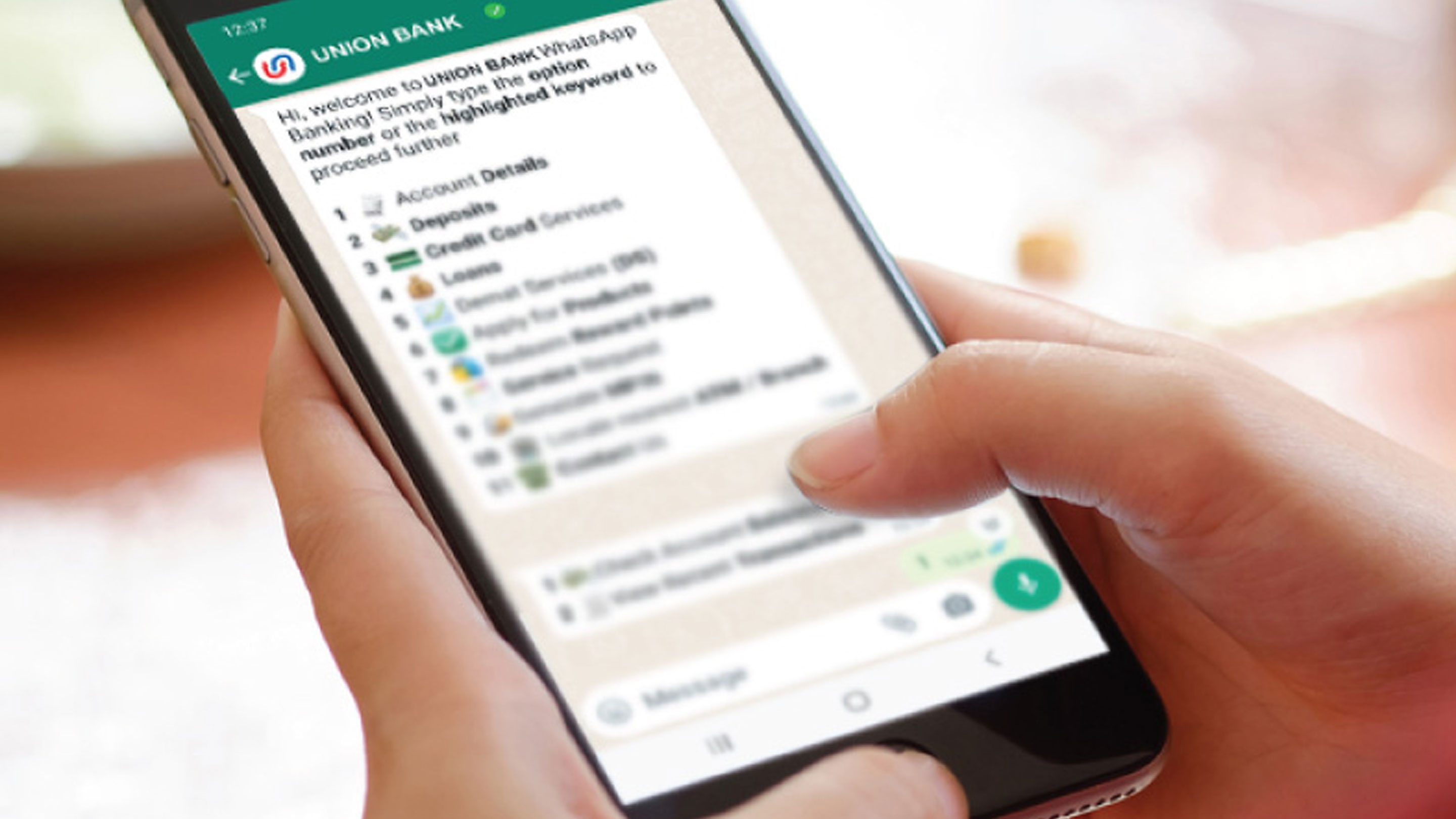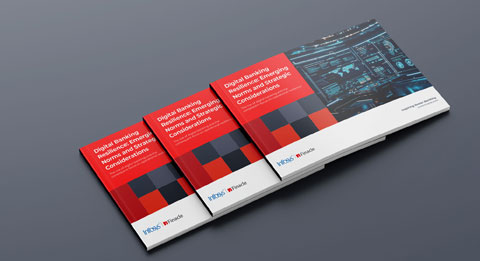-
![]() ESG in bankingESG-conscious banking should create new and future-proof value streams to build a sustainable and resilient business.Read More
ESG in bankingESG-conscious banking should create new and future-proof value streams to build a sustainable and resilient business.Read More -
![Everest Group PEAK Matri Everest Group PEAK Matri]() Everest Group PEAK MatrixA comprehensive solution delivering a full spectrum of wealth products as great experiences. It also improves the productivity of financial advisors and streamlRead More
Everest Group PEAK MatrixA comprehensive solution delivering a full spectrum of wealth products as great experiences. It also improves the productivity of financial advisors and streamlRead More -
![]() Subsidiary of an American Bank in IndonesiaFind out how a leading American bank adapts to a digitalized trade and supply chain finance operations as a part of its larger transformation by leveraging Finacle Trade Finance Solution Suite.Read More
Subsidiary of an American Bank in IndonesiaFind out how a leading American bank adapts to a digitalized trade and supply chain finance operations as a part of its larger transformation by leveraging Finacle Trade Finance Solution Suite.Read More
-
![]() Recomposing Banking: Leading the Digital ContinuumReport gives you a glimpse of the major areas where recomposing banking will create significant impact and value, Infosys Finacle has put together a report on..Read More
Recomposing Banking: Leading the Digital ContinuumReport gives you a glimpse of the major areas where recomposing banking will create significant impact and value, Infosys Finacle has put together a report on..Read More -
![]() Core Banking on Cloud: Navigating to the Fast LaneTake a deep dive into cloud-based core banking and explore the imperatives, opportunities and challenges, and the hallmarks of a robust solution.Read More
Core Banking on Cloud: Navigating to the Fast LaneTake a deep dive into cloud-based core banking and explore the imperatives, opportunities and challenges, and the hallmarks of a robust solution.Read More -
![]() Embracing Payments ComposabilityA step-by-step guide for maximizing Real Time Payment opportunities by embracing Payments Composability...Read More
Embracing Payments ComposabilityA step-by-step guide for maximizing Real Time Payment opportunities by embracing Payments Composability...Read More
-
![]() Shaping Banking’s Next: Banking Technology Trends for 2025 and BeyondThe banking industry has been balancing disruption and opportunity for several years now, and the pace of change shows no signs of slowing as we move into 2025 and beyond.Read More
Shaping Banking’s Next: Banking Technology Trends for 2025 and BeyondThe banking industry has been balancing disruption and opportunity for several years now, and the pace of change shows no signs of slowing as we move into 2025 and beyond.Read More -
![]() Virtual Accounts 2.0: Surpass Conventional Cash Management and Unlock Next-Gen PossibilitiesVirtual Account Management was a groundbreaking shift in the banking landscape, revolutionising use cases like cash concentration, pooling, centralised treasury management, and in-house banking (POBO, ROBO, COBO)Read More
Virtual Accounts 2.0: Surpass Conventional Cash Management and Unlock Next-Gen PossibilitiesVirtual Account Management was a groundbreaking shift in the banking landscape, revolutionising use cases like cash concentration, pooling, centralised treasury management, and in-house banking (POBO, ROBO, COBO)Read More -
![]() Unlocking Hybrid CloudAs banks push forward with their digital transformation agenda, cloud serves as a pivotal enabler. Each bank, at varying stages of adoption, crafts its unique path, dictated by context, regulations, and risk appetite.Read More
Unlocking Hybrid CloudAs banks push forward with their digital transformation agenda, cloud serves as a pivotal enabler. Each bank, at varying stages of adoption, crafts its unique path, dictated by context, regulations, and risk appetite.Read More
-
![]() Banking on CloudThis report from Infosys Finacle delves into the need for accelerating cloud adoption, highlights the current state of the industry, and puts forth key recommenRead More
Banking on CloudThis report from Infosys Finacle delves into the need for accelerating cloud adoption, highlights the current state of the industry, and puts forth key recommenRead More -
![]() Omdia Universe | Cloud-based Core BankingIn the report, Omdia highlights the following key capabilities of leading cloud-based core banking providers:Read more
Omdia Universe | Cloud-based Core BankingIn the report, Omdia highlights the following key capabilities of leading cloud-based core banking providers:Read more
-
![]() Emirates NBDEmirates NBD consolidates its operations on a single version for scalability, agility, and standardization.Read More
Emirates NBDEmirates NBD consolidates its operations on a single version for scalability, agility, and standardization.Read More -
![]() A Global Top 5 BankDiscover how a global top 5 bank headquartered in the US accelerated payments transformation.Read More
A Global Top 5 BankDiscover how a global top 5 bank headquartered in the US accelerated payments transformation.Read More -
![]() Union Bank of IndiaUnion Bank of India launches Union Virtual Connect (UVConn) by leveraging WhatsApp to provide customers personalized banking services.Read More
Union Bank of IndiaUnion Bank of India launches Union Virtual Connect (UVConn) by leveraging WhatsApp to provide customers personalized banking services.Read More

Personalized Bots in the Iot Environment
Blogs
RPA market trends have witnessed an ever-evolving trend of constant innovation on how the solutions address critical business problems. What started as a solution that automates repetitive rule-based tasks through unattended/attended automation, now boasts of an intelligent platform which plunges itself from the core ‘deterministic’ offering to a ‘cognitive’ one. AssistEdge is already aiming for the stars with Automation Singularity by providing a scalable and secure offering, right from identifying the appropriate use cases through our in-built Process Discovery tool to seamlessly automating the identified processes and orchestrating this entire gamut of complex activities through a digital-human concierge.
While AI and RPA solutions are already making strides and are the most recognized buzzwords for businesses attempting to catapult their efficiency into the next orbit; Internet of Things (IoT) will be the next big wave which will work in tandem with automation. With increased data sharing brought in by IoT, organizations are now able to experience seamless and efficient streamlining of business processes. This makes IoT a major candidate amongst emerging technologies to pair with RPA. But, before we jump into that bandwagon, let’s understand how these are related in modern-day businesses.
To understand how all these emerging technologies will work in sync, let’s dissect how we humans function on a day-to-day basis. The reason we are choosing a modern-day human as a reference is because at the end of the day the purpose of these technologies is to replicate what humans have been doing for the past decade or two and ensure that an organization’s productivity is prioritized in the right place. A human body works in a fascinating way that we almost take for granted. We use our mind to analyze a situation and make decisions real-time; our limbs to react to the analysis and enact the decision that the mind has made. Every moment of our life, the human body is performing three steps: observation, decision and action. Enterprise operations are fairly similar operationally where organizations need to analyze what situation they are in, make a decision accordingly and take actions based on the decisions.
With data being ‘the new oil’ in the current century, Artificial Intelligence and Machine Learning are helping entities make complex decisions day in and day out. Not that a human can’t perform the same task but something that a human workforce won’t be efficient in w.r.t ‘time’ being one of the most important metrics for business success. Artificial Intelligence is nothing but a machine’s mind which analyzes data patterns, makes guesstimates with minimal error and prescribes a plan of action. But, someone needs to execute what the AI/ML offering suggests. This is where RPA comes into the picture. RPA can pick up action triggers based on events and execute pre-programmed repetitive tasks with ease. RPA and AI will always work in tandem, similar to how our limbs and mind are connected. But, for them to make a decision and enact on it, these technologies are reliant on another aspect of the mind — Observation. Data needs to be fed into an AI model in order to gain insights and take subsequent actions. This is where IoT comes in handy. Internet of Things is a concept of intercommunicating devices which can identify each other, transmit data and pass triggers for pre-programmed business/personal needs. In other words, if AI is the mind and RPA the limbs of an organization, then IoT is the eye and ear, which helps an organization observe events around their universe.
According to GE, IoT will contribute roughly $10-15 trillion to the global GDP by the next decade or two. Global consulting giant McKinsey and Company has visualized IoT transformation involving interconnected devices into two broad categories:
- Information and Analysis
- Automation and Control
A simple example of ‘Information and Analysis’ would be how IoT has already made its presence felt in supply chain with industrial automation. With the help of sensors and actuators, organizations can track products in the supply chain lifecycle and monitor health of the industrial equipment, etc. IoT Gateway devices are the communication bridge between the endpoint sensors, and the Cloud server helping democratize the information. ‘Automation and Control’ is where IoT is making rapid strides with the advent of ‘Home Automation’ and ‘Smart Living’ intelligent infrastructure. Users can now have every home electronic devices connected, controlled by a standalone application on a personal mobile phone. This is where personalized bots in RPA can help revolutionize the industry as a whole as it receives actionable insights from IoT sensors and transform them into meaningful engagements as per business/customer needs.
RPA and IoT will primarily elevate operational efficiencies by providing innovative ways to capture business information and leverage it with the help of personalized bots managing it. Autonomous responses to events will experience a transformative journey where personalized bots will be configured to take instantaneous actions without any human intervention whenever an IoT device signals a trigger. This will drastically improve the quality of output for both home and industrial automation scenarios. The future lies in interconnected devices exchanging gazillion data points every second and it needs an ecosystem of products and solutions to ensure a seamless transformation from today’s as-is state. The future lies with IoT, AI and RPA coexisting and forming a holistic solution suite to make daily lives of an enterprise and its staff hassle-free, thereby channelizing the productivity levels on other pressing needs.


©2025 -Edgeverve Systems Limited | All rights reserved

